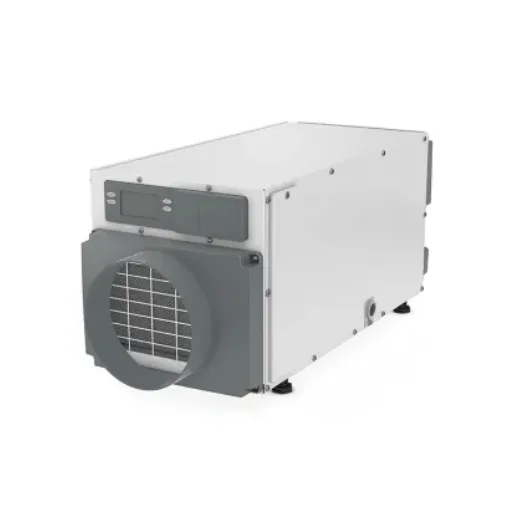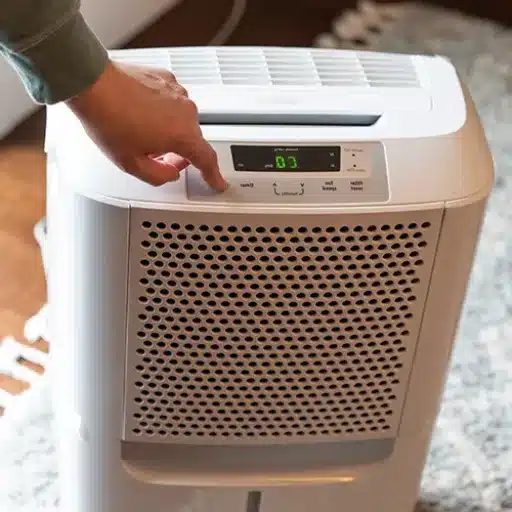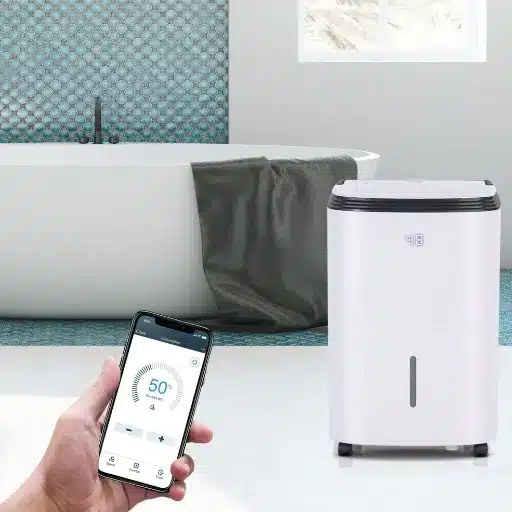Maintaining a balanced humidity level in the bathrooms is essential to prevent excessive moisture, which can cause mold, mildew, and damage to the house’s structure. Two commonly used solutions to combat these issues are bathroom exhaust fans and dehumidifiers. They both serve the same purpose of reducing the moisture present in the room, just in different ways. In this article, we will do an in-depth comparison of bathroom fans and dehumidifiers, looking at how they work, their effectiveness, their price, and where they are likely to be used the most.
What’s the difference between a bathroom fan and a dehumidifier?
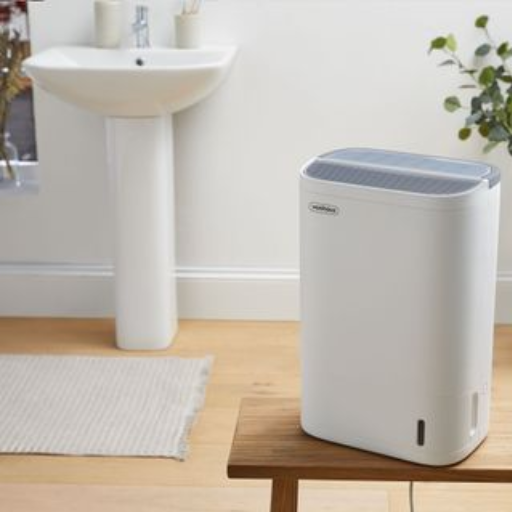
The purpose of a bathroom fan is to expel air full of humidity to the outside and, by doing so, lower the moisture level in a room. Fans work best when running during steam, creating activities such as showers or running sinks. On the other hand, dehumidifiers pull air into their system and condense the moisture, which is then collected in a container or eliminated by a drained hose. Instead of letting air out of a room, dehumidifiers remove the moist air and release it without the excess moisture. Bath fans are the ergonomically correct choice for quick humidity removal, while dehumidifiers excel in moisture management in bathrooms lacking ventilation or other extraordinary and damp places.
How does a bathroom exhaust fan work?
The functioning principle of a bathroom exhaust fan enables it to remove odors, humid air, and contaminants from the bathroom and vent it outside the building. Using an electric motor to power a fan blade or an impeller responsible for the airflow is possible. The moist air gets pulled into the fan’s housing and is channeled out through ductwork connected to an external vent. Proper ventilation maintains ideal humidity levels and protects the bathroom’s surfaces and fixtures from damage while avoiding the growth of mold and mildew. Practical functionality depends on efficient installation, which includes sufficient fan size and ducting, as well as unrestricted outdoor venting.
Understanding the function of a dehumidifier
A dehumidifier reduces overly high humidity within a given space to achieve a more comfortable and healthy environment. Its process starts by drawing in humid air, which is then cooled to the point that condensation happens. The water condenses into a liquid form, either collected in a tank or drained away. After this process, drier air is expelled into the room. These actions effectively prevent mold growth, reduce allergens like dust mites, and protect structures and furnishings from moisture damage. Using dehumidifiers effectively includes an awareness of the specific room’s recommended capacity and ensuring that the water tank, filter, and all other elements are maintained and cleaned regularly for exceptional efficiency.
Comparing airflow and moisture removal capabilities
Two parameters are always discussed when discussing a dehumidifier’s airflow and moisture extraction capabilities: CFM and pints per day (PPD). Airflow is measured in CFM, and more incredible CFM means the device can process more air, translating to more moisture extraction from more extensive areas. The circulation and rate of dehumidification increase as the room size increases; hence, higher CFM is preferred.
On the contrary, PPD indicates the amount of moisture a unit can pull out from the air daily, specifically in 24 hours under standard conditions. Generally, models designed for greater humidity concentration or larger areas have higher PPD ratings. You need to take these parameters together because the performance may not be effective with only airflow or moisture removal capacity. Using units with high CFM but low PPD, or vice versa, may lead to unsatisfactory results considering the space served. Compatibility with the size of the room and humidity conditions is crucial in these circumstances.
Do I need both a bathroom fan and a dehumidifier?
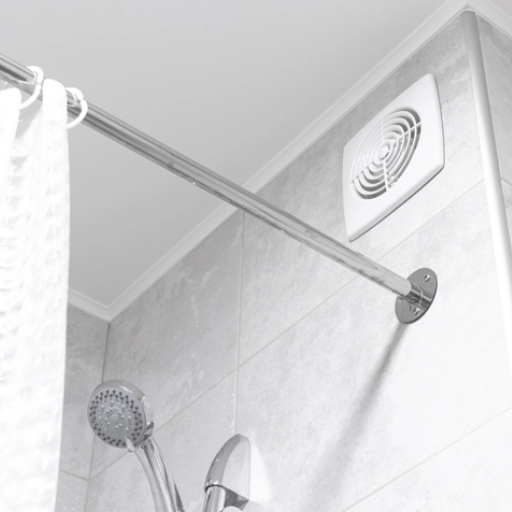
Even though a bathroom fan and a dehumidifier have separate roles, both can be useful depending on the requirements of your condominium. A bathroom fan, for instance, is built to remove moist air from the room while a person showers to prevent condensation and mold from growing in the bathroom. Although a fan can help somewhat, it does not fully solve a room’s constant high humidity problem. In contrast, a dehumidifier lowers the moisture content in the air by actively taking in water from the air, thus ensuring optimal humidity levels are maintained. If your bathroom is consistently damp, even with a fan, a dehumidifier can help by working alongside the fan to manage the moisture levels effectively.
Assessing your bathroom’s humidity levels
To measure the humidity level in a bathroom, you will require a hygrometer, a distinctive type of thermometer that measures moisture in the air. You should ensure that the hygrometer is at a midpoint of the bathroom but away from direct water sources for proper readings. Ideally, ideal humidity levels should fall between 30% and 50% within door ranges. Constant readings above this range indicate too much dampness, bringing fungus, peeling paint, or a musty scent.
Procedures and practices that can lead to increased bathroom moisture include improper ventilation, extended hot showers, and low-capacity exhaust fans. Conduct a tissue test near the fan to assess if the ventilation system works satisfactorily. If the tissue is not drawn towards the fan when it is operational, it indicates low airflow. Proper ventilation and regular hygrometer readings enhance moisture control and minimize drying damage caused by moisture.
Factors to consider when choosing between a fan and dehumidifier
When selecting a fan or dehumidifier, specific use and moisture problems of the space suggest which would fit my needs. Fans are usually most efficient in air circulation and heat reduction but cannot assist in dehumidifying. Dehumidifying devices, however, are purposely built to pull moisture out of the air, an attribute very valuable in combating persistent mold or mildew. These devices also vary in energy effectiveness, the noise produced, and the area to save coverage. For instance, a dehumidifier works better in a bathroom or basement, usually high moisture zones, while a fan would be appropriate in drier, ventilated rooms.
Benefits of using both devices in tandem
Implementing a fan alongside a dehumidifier offers a more integrated approach to managing indoor air quality. Since fresh air is circulated, stagnant air is bypassed, enabling the dry air produced by the dehumidifier to be distributed around the room more effectively. Their combination is proven effective in reducing areas with a high moisture concentration. While fans provide moderate activity to the air to avoid stagnation, dehumidifiers eliminate moisture from the area, removing humidity-related issues. This combination enhances energy efficiency by allowing the fan and dehumidifier units to work together. This integrated approach can eliminate areas of humidity concentration, such as basements, bathrooms, and laundry rooms that are poorly ventilated.
How do you properly install a bathroom exhaust fan?
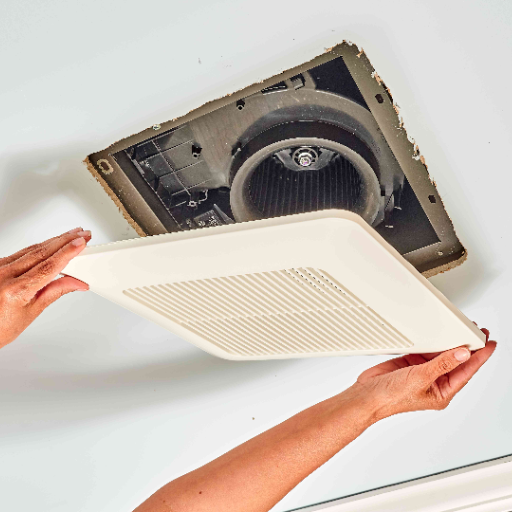
The general procedure for installing a bathroom exhaust fan begins with locating ventilation, usually in the bathroom ceiling above the shower or tub area. When working on a new or replacement fan, always ensure that the power to the fan’s circuit is turned off. Turn off the power to replace an old fan and ensure all ductwork is in good condition. If required, cut a hole in the ceiling to match the old fan’s housing width. Use screws or bolts to attach the fan housing to the ceiling joists. Follow the manufacturer’s instructions and connect the electrical wires to the fan. Duct the fan from HVAC so that outside air is pulled through the building via ventilation. Turn the fan on to ensure it is functioning correctly, and place the vent cover on top for installation completion. The efficient operation of a fan is highly dependent on how well it is sealed and insulated. Follow all manufacturer and local construction rules and regulations during the installation process.
Determining the right CFM for your bathroom size
The CFM rating of a bathroom fan depends on the bathroom size. Generally, there should be 1 CFM for each square foot of space in the bathroom. A 50-square-foot bathroom will need a fan with a 50 CFM rating. It should also be noted that increased ventilation may also be required for bathrooms over 100 feet. For instance, each toilet, shower, or bathtub may add the requirement of 50 CFM, with a higher demand of 100 CFM for whirlpool tubs.
If the bathroom’s ceiling is over eight feet, the total volume should be calculated and divided by 60 to determine the appropriate CFM. This guarantees that the air is effectively replaced once each minute. It’s essential to validate this calculation with the manufacturer’s guidelines and local building codes.
Connecting the duct and venting options
I always ensure that these components fit together reasonably for the ducting and venting of the bathroom exhaust fan. One of the fan’s basic conditions is that the duct size must match the fan’s outlet diameter. If there are flexible ducts, I typically will use them as short and straight as feasible. I do not encourage venting the fan into an attic or crawl space because they can further optimize the system’s efficiency and will aid in moisture reduction and mold destruction. Moreover, I securely seal all the connections with metal foil tape to apply the first line of defense against air leaks.
What are the best dehumidifiers for bathrooms?
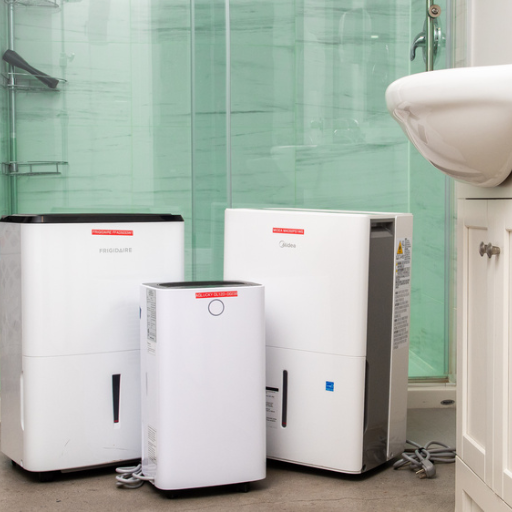
When looking for the best bathroom dehumidifiers, focus on small, energy-saving models for limited spaces. Essential specifications include an efficient moisture extraction rate per day relative to the bathroom’s size, automatic shut-off to avoid overfilling and quiet operation. Leading candidates are the portable and efficient Pro Breeze Electric Mini Dehumidifier and the practical yet power cord-free Eva-Dry E-333. These include desiccant and thermoelectric models. Ensure the dehumidifier is set for the humidity levels often found in bathrooms for effective performance.
Portable vs. built-in dehumidifier options
The choice between portable and built-in dehumidifiers dramatically relies on the setting and user needs as they serve different functions and different user objectives. Portable dehumidifiers offer convenience and mobility. They are excellent for temporary usage, can be moved from room to room, and are suited for smaller spaces, especially when minimal installation is done. These hOmeLabs 4,500 sq ft Dehumidifier models are designed with built-in tanks and drainage hoses to decrease user maintenance requirements. Still, they may need regular emptying and filter cleaning to remain functional.
In comparison, built-in dehumidifiers are more expensive and not portable but serve the essential purpose of diminishing humidity within larger spaces such as houses. These models work with existing HVAC systems or are put in basements or multi-story buildings with increased dehumidification needs. An example of this technology is the Aprilaire 1850 Pro Dehumidifier, which is easy to maintain and dependable. Decreased supervision and increased durability are two key benefits of the dehumidifier product. These models require heavy payments because of their infrastructure and manual supervision when installed.
Individual necessity depends on how large the building is, how often it is occupied, the targeted humidity level, and personal finances. Choices of Portable and built-in units are cost-effective but manage humidity more effectively in larger environments.
Features to look for in a bathroom dehumidifier
When buying a bathroom dehumidifier, there are several features I will make sure to observe to ensure that the purchase meets the required expectations. First, the dimensions and volume are essential; I must choose a dehumidifier whose removal capacity corresponds to the area in my bathroom. Second, I am looking for an auto-humidity control feature. This enables me to determine the desired control and humidity without manual adjustment. Third, compact size is favorable in helping smaller bathrooms to look more spacious, and portable design makes it easy to store. Their modernization to include energy-saving features is also an advantage, even more so for those units rated with Energy Stars. Other features such as quiet mode, washable filters, and timers are additional increments in usefulness and convenience. In addition, I consider it very safe to have an auto shut-off feature when the tank is already full.
Top-rated dehumidifiers for small spaces
- hOmeLabs Small Space Dehumidifier—This unit stands out for its compact design, quiet operation, and energy-efficient performance. It’s perfect for limited spaces and includes a modern auto shut-off feature when the tank is full.
- Pro Breeze Electric Mini Dehumidifier—Known for its lightweight build and effectiveness in small spaces, it operates efficiently with a low energy consumption rate. It also features a removable 18-ounce water tank for easy emptying.
- Eva-Dry EDV-1200 Ergonomic Dehumidifier—This sleek model excels in portability. It offers powerful moisture removal, whisper-quiet operation, and safety features like auto shut-off, making it ideal for tight spaces.
How can I prevent mold and mildew in my bathroom?
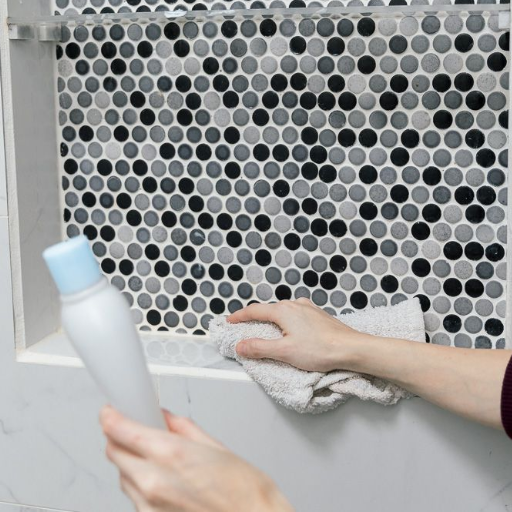
To eliminate mold and mildew in your bathroom, maintain ventilation with exhaust fans or windows to decrease humidity. Clean and dry surfaces prone to moisture, such as tiles, grout, and shower curtains, regularly to control mold growth. Use a dehumidifier and set the target humidity below 50% to restrict mold growth. Fix any leaking pipes, fixtures, or holes in the wall to stop water from collecting in the area. Finally, applying mold-resistant paint or sealants on surfaces may also be beneficial.
The role of proper ventilation in mold prevention
Proper ventilation is key to ensuring adequate humidity control within the indoor environment and minimizing the chances of mold formation. The ventilation of spaces makes it possible to reduce surface condensation and balances the moisture content during other activities such as cooking, showering, and even laundry. Ensure exhaust fans installed in bathrooms and kitchens are switched on during and after these activities since they are highly effective in expelling humid air outside. Windows and doors can be opened to bring in fresh air, which is greatly needed in damp areas to aid cross ventilation. For homes that have poor ventilation, significant advances have been made in ventilation conditioning systems, such as HRVs and ERVs, which provide a solution by balancing humidity and air quality. Proper ventilation reduces moisture and air changes sufficiently to avoid conditions that favor mold growth.
Using a dehumidifier to control moisture levels
A dehumidifier is a simple but effective tool for maintaining proper humidity in my home. It removes the extra moisture from the air and inhibits mold growth, allowing a person to remain comfortable in the house. I use a dehumidifier sized to the room’s square foot and the amount of humidity that needs to be taken care of so that it can work as efficiently as possible. Moreover, regular maintenance is required to ensure the unit works for a long time, so I remember to clean the filters and empty the water tank. This method works well with other ventilation techniques to manage moisture levels in the house thoroughly.
Additional tips for maintaining a dry bathroom environment
- Install High-Quality Exhaust Fans
Ensure a powerful exhaust fan is installed during and after showers to remove moisture-laden air effectively. Opt for a model with an appropriate CFM rating based on the bathroom size, and clean the vents regularly to maintain efficiency.
- Sealing Grout and Tiles
Apply a waterproof sealant to grout lines and tiled surfaces to prevent seepage. This keeps surfaces dry and reduces the risk of mold and mildew growth over time.
- Use Absorbent Mats and Towels
Place quick-drying, absorbent bath mats near wet areas to capture water effectively. Regularly wash and dry these mats and towels to prevent dampness from lingering in the space.
- Maximize Natural Ventilation
When possible, open bathroom windows to allow fresh air circulation. This helps naturally reduce humidity levels, augmenting the exhaust fan’s performance.
- Regularly Inspect for Leaks
Check for leaks in plumbing fixtures such as sinks, toilets, and showers. Even small leaks can contribute significantly to moisture problems, so fixing leaks promptly is essential to maintain a dry environment.
Are there energy-efficient options for bathroom ventilation?
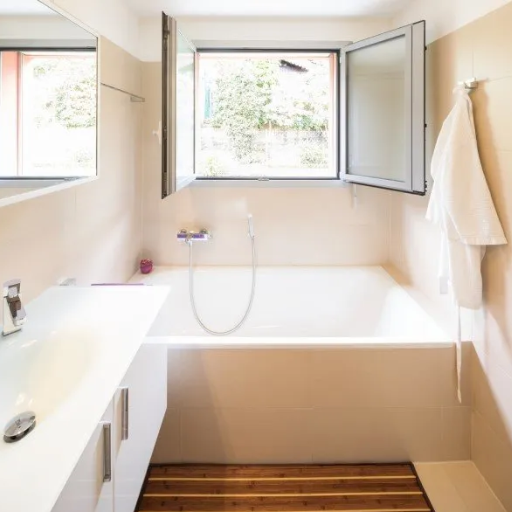
Consider a range of energy-efficient solutions to enhance ventilation within your bathrooms. Installing ENERGY STAR® classified exhaust fans is one such idea, as it consumes less energy while having adequate ventilation. Often, these fans include high-end features like motion and humidity sensors, timers, and other control systems to minimize energy expenditure. Furthermore, installing HRV/ERV integrated with ventilator systems can enhance efficiency by recovering heat from outgoing air. Periodic upkeep, such as fan blade cleaning, filter changes, and other activities, can also improve performance in the long term.
Energy Star-rated bathroom exhaust fans
Quality is not compromised with performance regarding Energy Star-rated bathroom exhaust fans. These fans utilize sophisticated motor technology and mechanics, enabling newer models to outperform older models by up to 60%. Standard models also have many practical features, including variable speed control, quieter operation, and built-in LED lights.
When purchasing an Energy Star-designated fan, always consider the fan’s airflow volume (measured in cubic feet per minute, or CFM) and noise levels (measured in sones). For example, a fan with an exhaust CFM rated at a square foot of the room prevents moisture build-up from improving indoor air quality while spending no extra energy, which is why a CFM rating is enforced on room-sized fans.
Proper installation is necessary for all unit pieces to be practical, such as opening ductwork to allow airflow resistance, air duct casing to eliminate air leaks, and smoke testing to find foes. The remaining active constituents to save energy and power long-term are gentle cleaning and changing out filters. Users who install and sustain an Energy Star bathroom exhaust fan will contribute positively to humanity in collaboration with their reduction of ventilation and economic savings.
Innovative dehumidifiers with humidity sensors
Dehumidifiers that operate automatically and use humidity sensors are great because they can improve indoor air quality. From a practical standpoint, these sensors ensure that the device switches on only when needed, which is more energy-efficient than older dehumidifier models. Users can set mobile devices for humidity control through Wi-Fi on many newly released devices. These appliances make it easier for people to improve home comfort with custom shut-off settings, smart home integration, target, structural integrity, and prevent mold growth.
Combining ventilation with heat recovery systems
Heat recovery ventilation (HRV) systems have been created to improve indoor air quality while using as little energy as possible by collecting heat from exhaust air. These devices use a heat exchanger to convey thermal energy from the stale outgoing air to the fresh incoming air. This reduces the conditioning energy needed for the incoming air and achieves the desired ventilation level with almost compliance. When used with the latest filtration devices, HRVs are more effective in removing pollutants and allergens, making air more breathable.
Today’s HRV units utilize advanced technology for airflow control and energy usage monitoring. Studies indicate that installing HRV systems in newly constructed or retrofitted structures helps minimize heating and cooling demands and, consequently, energy consumption by as much as 30%. HRV systems set and monitor thermal comfort and indoor air quality norms since they guarantee adequate air exchange and efficient thermal regulation, which makes them crucial to modern energy-efficient building designs.
What are the building codes for bathroom ventilation?
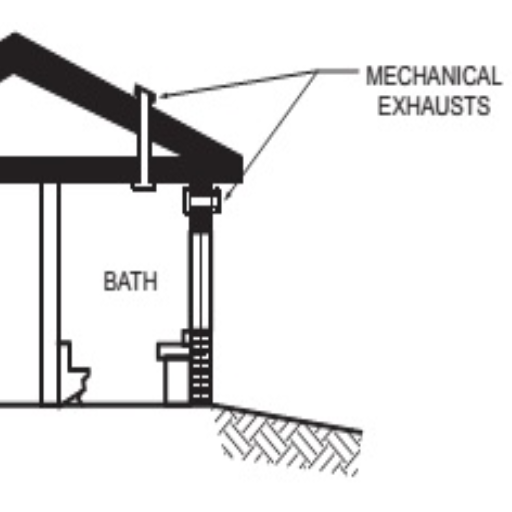
Most building regulations for the construction of structures incorporate bathroom ventilation requirements that must be met to secure adequate air exchange and moisture control. As stated in the International Residential Code (IRC), bathrooms require an operable window with a minimum openable area of 1.5 square feet or some other artificial means of ventilation to exhaust at least 50 CFM. Continuously running ventilation systems have reduced requirements of 20 CFM. Furthermore, exhaust vents must be located outside, not in attics, crawl spaces, or other interior areas, to avoid trapping moisture and enabling mold to proliferate. It is advisable to follow local municipal codes since they are typically more stringent than the regulations specific to regions.
Understanding local requirements for exhaust fans
Exhaust fans may have diverse local prescriptions depending on the close geographic construction regulations, weather patterns, and certain specific city limits. Principally, most codes require baths and kitchen exhaust fans to have specific preset airflows to facilitate ventilation adequately. For example, the American Standard’s bathroom fan (model ASBF70S) comes with a motion sensor switch and is rated 50 CFM and 20 CFM when the fan is operated and on continuous systems, respectively. Kitchen exhaust fans usually have more significant requirements, which are routinely above 100 CFM, to prevent the accumulation of grease and cooking fumes.
It is equally important to check if local codes need additional requirements like back-draft dampers or prescribe the type of duct material that may restrict the airflow and effectiveness of the fan. Certain regions may demand more stringent control requirements for the noise generated by house exhaust fans, which is usually quantified in sones. Also, it is advisable or even compulsory in some states to adhere to energy-efficiency directives such as those set by the Insulating Waterproofing Master Builders Association (IWMB).
Consult with your local building authority to ensure these prescriptions are used. Online guides or generic suggestions may lack sufficient information about the amendments. Moreover, changes to the system’s design or installation method should comply with ASHRAE standards within the country. Most installers have a wealth of experience, which can help them meet unusual local requirements. Always be concerned about avoiding fines but still have the best indoor air quality.
Proper sizing and installation guidelines
When planning for HVAC installation, it is highly recommended first to carry out load calculations known as Manual J to eliminate the possibility of improper air conditioning unit sizing. The country’s climate, insulation, and building space determine the required unit size. Failure to appropriately size leads to short cycling or inefficient operations due to over or undersized units. Equally important is the installation process, constrained by the meticulous positioning of ductwork, placement, and sealing materials used to mitigate energy loss and improve airflow. Cognitive Behavioral Therapy has a well-established record across a range of mental health disorders to enable users to achieve functional regulatory resources. It is crucial, however, to maintain periodic communication with already established consultants like ASHRAE Standards, manufacturers’ manuals, and local regulations to alleviate noncompliance issues.
When is a dehumidifier an acceptable alternative?
An alternative is a dehumidifier, an acceptable substitute for devices that regulate temperature and humidity simultaneously. This is particularly true for those areas such as basements, crawl spaces, or other enclosed regions where moisture is present. Therefore, the potential risk of mildew, mold, or even structural damage is likely. In areas that do not require or have the option of air conditioning, while other high humidity and poor air quality persists, dehumidifiers could be highly recommended. Moist environments spur numerous allergens; thus, dehumidifiers can work wonders for indoor air quality. However, it must be remembered that HVAC should still be used as a primary source of mediation and temperature moderation.
References
Frequently Asked Questions (FAQ)
Q: What are the main differences between a bathroom fan and an air dehumidifier for humidity control?
A: A bathroom fan primarily removes moist air and steam directly from the bathroom and vents it outside. On the other hand, an air dehumidifier actively extracts moisture from the air, collecting it as water. Bathroom fans are typically more effective for immediate humidity control during showers or baths, while dehumidifiers are better for continuous moisture removal in larger spaces or basements.
Q: How effective is a bathroom fan at removing condensation?
A: A properly installed and sized bathroom vent fan can effectively remove condensation. It extracts humid air and steam generated during showers or baths, preventing moisture from settling on surfaces. For best results, run the fan during and for about 30 minutes after bathing to ensure thorough moisture removal and to maintain good indoor air quality.
Q: Can a dehumidifier replace a bathroom fan?
A: While a dehumidifier can help control overall humidity levels, it’s not an ideal replacement for a bathroom fan. Bathroom fans are designed to quickly remove steam and moisture during and after showers, crucial for preventing mold growth and maintaining good air quality. A dehumidifier works more slowly and may not be able to handle the rapid increase in humidity from showering. Use a fan for immediate moisture removal and a dehumidifier for ongoing humidity control for optimal results.
Q: What size bathroom fan do I need for effective humidity control?
A: The size of your bathroom fan should be based on the square footage of your bathroom. A general rule is to have at least one cubic foot per minute (CFM) of airflow per square foot of bathroom area. For example, a 50 sq ft bathroom would need a fan rated at least 50 CFM. For bathrooms larger than 100 sq ft, add 50 CFM for each toilet, shower, or bathtub. Proper sizing ensures adequate moisture and steam removal.
Q: How do I know if I need a dehumidifier in my bathroom?
A: You might need a dehumidifier in your bathroom if you notice persistent dampness, visible mold growth, or a musty odor, even with regular use of an exhaust fan. Other signs include condensation on windows or mirrors long after showering, peeling paint or wallpaper, or if your bathroom is in a basement where moisture accumulates. A hygrometer can help you measure relative humidity; a dehumidifier could be beneficial if it consistently stays above 60%.
Q: Are there any energy-efficient options for bathroom humidity control?
A: There are several energy-efficient options for controlling bathroom humidity: 1. Use a bathroom fan with a built-in humidity sensor or timer to shut off automatically. 2. Install a low-energy consumption dehumidifier. 3. Upgrade to an ENERGY STAR-certified bathroom fan, which uses less electricity. 4. Consider a heat recovery ventilator (HRV) system for whole-house ventilation, including the bathroom. 5. Use a fan with a DC motor, which is more energy-efficient than traditional AC motors.
Q: How can I improve my bathroom’s ventilation if I can’t install a vent fan or dehumidifier?
A: If you can’t install a vent fan or dehumidifier, try these alternatives: 1. Keep the bathroom door open or slightly ajar after showering to allow air circulation. 2. Open windows when possible to let in fresh air and allow moist air to escape. 3. Use a portable fan to help circulate air and dry surfaces faster. 4. Wipe down wet surfaces after bathing to remove excess moisture. 5. Consider using moisture-absorbing products like silica gel or activated charcoal. 6. Install a window fan, if possible, to help extract humid air. Remember, these methods may not be as effective as a proper ventilation system, but they can help manage humidity levels.

